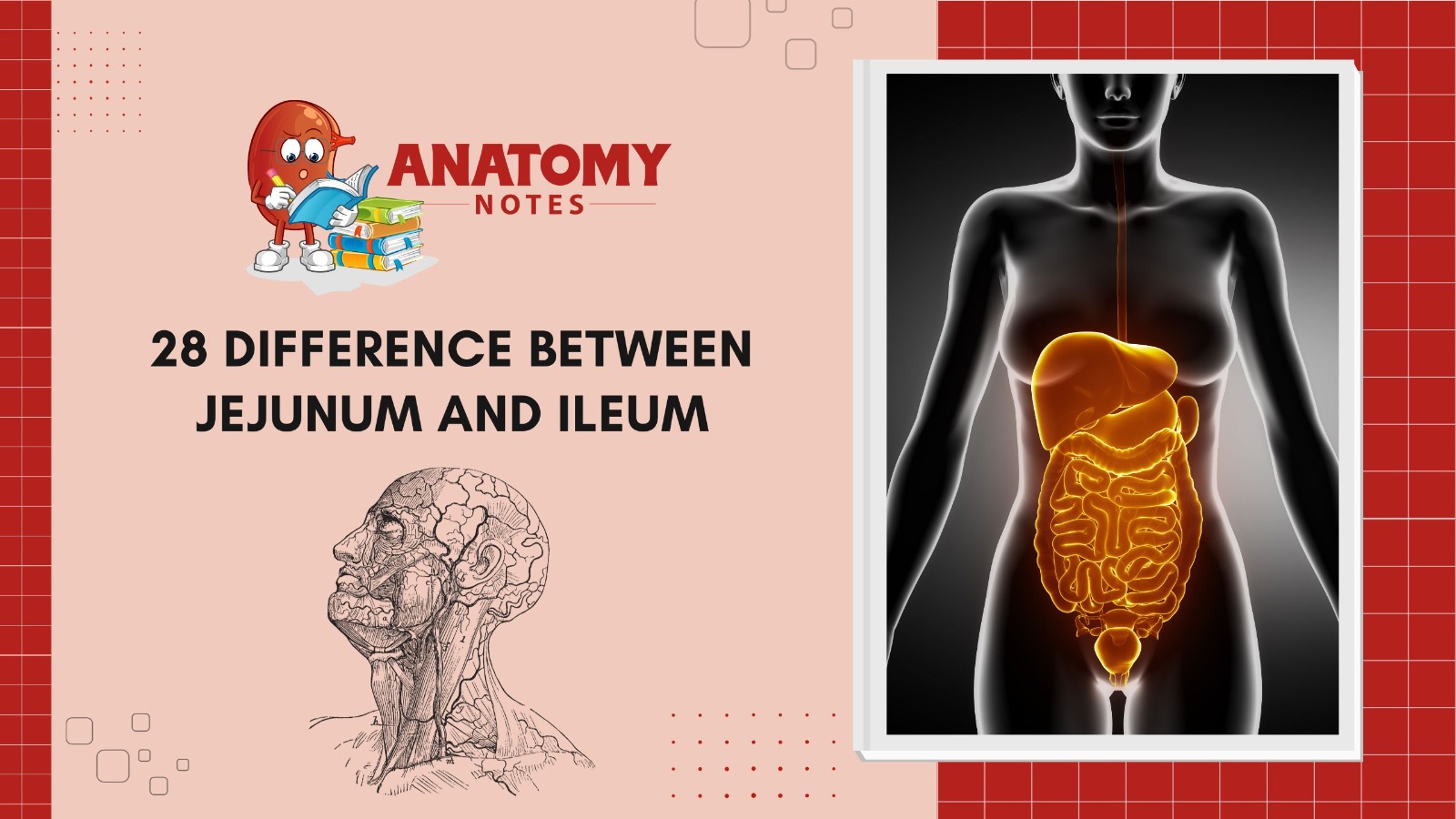The jejunum and ileum are two regions of the small intestine that aid digestion and nutrition absorption. Both have commonalities but also differ in location, structure, roles, and qualities. These segments’ gastrointestinal tract locations vary. Between the duodenum and ileum is the jejunum. However, the ileum connects the small intestine to the colon. These structures vary in the jejunum and ileum. The jejunum is thicker and wider than the ileum. Greater circular folds, known as plicae, increase nutrient absorption surface area. Less widespread and finer circular folds exist in the ileum.
These segments also vary in microscopic anatomy. For smooth movement, the jejunum has longer villi and more goblet cells that create mucus. However, the ileum has shorter villi and more Peyer’s patches, lymphoid follicles essential for intestinal immune responses.
Both the jejunum and ileum absorb vitamins, minerals, and some carbs. The jejunum absorbs amino acids and fatty acids, an important part of protein and lipid digestion. In contrast, the ileum absorbs bile salts, vitamin B12, and other nutrients. Additionally, the segments’ motility patterns differ. Jejunum peristaltic contractions are stronger, mixing and moving chyme (partially digested food) down the digestive system. A shorter transit time and weaker ileum contractions aid nutrition absorption.
The jejunum and ileum are essential to the small intestine’s digestion and absorption. Location, structural properties, villi shape, nutrition absorption, and motility patterns vary amongst these segments. Understand these differences to understand the complex mechanics of digestion and nutrition intake in the human body.
Also Read: Gastrointestinal System – Intro, Functions, Movements & Organs Associated
Here are 14 differences between the jejunum and the ileum:
|
S.No. |
Aspects |
Jejunum |
Ileum |
|
1 |
Location |
Middle part of the small intestine |
Terminal part of the small intestine |
|
2 |
Length |
Typically shorter (about 2/5 of the small intestine) |
Typically longer (about 3/5 of the small intestine) |
|
3 |
Diameter |
Slightly larger in diameter |
Slightly smaller in diameter |
|
4 |
Vascularization |
Rich blood supply |
Less extensive blood supply |
|
5 |
Plicae circulares |
Prominent plicae circulares (intestinal folds) |
Plicae circulares are less pronounced |
|
6 |
Villi |
Villi are tall and closely packed |
Villi are shorter and less tightly packed |
|
7 |
Absorption |
Absorbs a significant portion of nutrients |
Absorbs bile salts and what’s left of nutrients |
|
8 |
Nutrient Absorption |
Absorbs carbohydrates and amino acids |
Absorbs bile acids and vitamin B12 |
|
9 |
Nutrient Transport |
Transports nutrients to the bloodstream |
Transports nutrients to the bloodstream |
|
10 |
Nutrient Specificity |
Absorbs a wide range of nutrients |
Specialized in absorbing certain nutrients |
|
11 |
Digestive Enzymes |
Secretes digestive enzymes |
Secretes digestive enzymes |
|
12 |
Motility |
Involved in mixing and propelling food |
Involved in further digestion and absorption |
|
13 |
Disease Associations |
Less associated with Crohn’s disease |
More commonly affected by Crohn’s disease |
|
14 |
Surgical Resection Risk |
Less frequently resected surgically |
More frequently resected surgically |
Also Read: The Skeletal System: Parts, Functions, Diagrams, & Facts
Frequently Asked Questions (FAQS)
Q.1 Where are the jejunum and ileum?
The small intestine’s jejunum and ileum are vital to digestion. The jejunum is between the duodenum and ileum. The ileum connects the small intestine to the colon.
Q.2 How do jejunum and ileum vary structurally?
Jejunum walls are thicker and bigger than ileum walls. Well-developed circular folds called plicae boost nutrient absorption surface area. The ileum features finer, less widespread circular folds.
Q.3 How do the jejunum and ileum absorb nutrients?
Both the jejunum and ileum absorb nutrients. The jejunum absorbs amino acids and fatty acids for protein and lipid digestion. Bile salts, vitamin B12, and other nutrients are absorbed via the ileum.
Q.4 How do the motility patterns of the jejunum and ileum differ?
The jejunum has stronger peristaltic contractions to mix and move chyme down the digestive system. Less powerful ileum contractions shorten transit time, promoting nutrition absorption.
Q.5 What microscopic distinctions exist between the jejunum and ileum?
In microscopy, the jejunum has longer villi and more goblet cells that create mucus for smoother passage. The ileum contains Peyer’s patches, and lymphoid follicles essential for intestinal immune responses, and has shorter villi.




